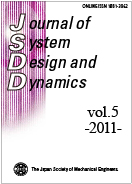5 巻, 4 号
選択された号の論文の10件中1~10を表示しています
- |<
- <
- 1
- >
- >|
Papers
-
2011 年 5 巻 4 号 p. 513-522
発行日: 2011年
公開日: 2011/06/20
PDF形式でダウンロード (1138K) -
2011 年 5 巻 4 号 p. 523-534
発行日: 2011年
公開日: 2011/06/20
PDF形式でダウンロード (797K) -
2011 年 5 巻 4 号 p. 535-546
発行日: 2011年
公開日: 2011/06/20
PDF形式でダウンロード (1617K) -
2011 年 5 巻 4 号 p. 547-559
発行日: 2011年
公開日: 2011/06/20
PDF形式でダウンロード (2601K) -
2011 年 5 巻 4 号 p. 560-576
発行日: 2011年
公開日: 2011/06/20
PDF形式でダウンロード (634K) -
2011 年 5 巻 4 号 p. 577-588
発行日: 2011年
公開日: 2011/06/20
PDF形式でダウンロード (966K) -
2011 年 5 巻 4 号 p. 589-602
発行日: 2011年
公開日: 2011/06/20
PDF形式でダウンロード (986K) -
2011 年 5 巻 4 号 p. 603-611
発行日: 2011年
公開日: 2011/06/20
PDF形式でダウンロード (365K) -
2011 年 5 巻 4 号 p. 612-623
発行日: 2011年
公開日: 2011/06/20
PDF形式でダウンロード (551K) -
2011 年 5 巻 4 号 p. 624-641
発行日: 2011年
公開日: 2011/06/20
PDF形式でダウンロード (5225K)
- |<
- <
- 1
- >
- >|
